Sharad Roy
Audio-Visual Decision Fusion for WFST-based and seq2seq Models
Jan 29, 2020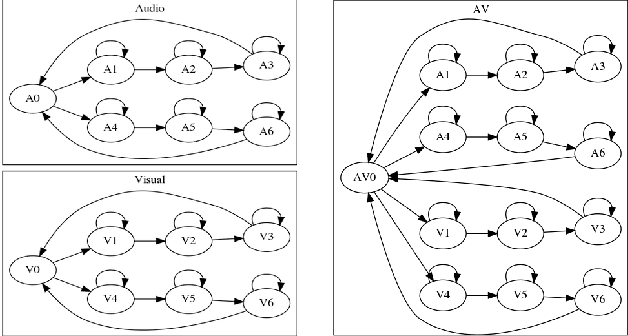
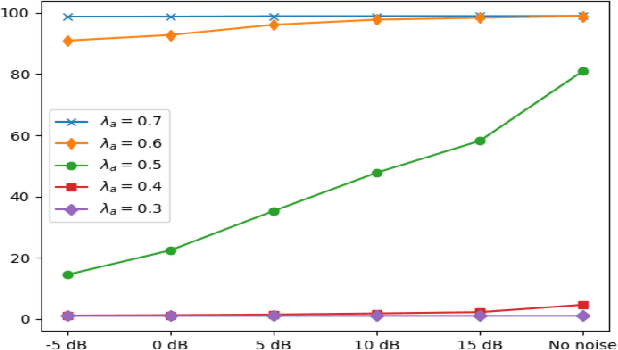
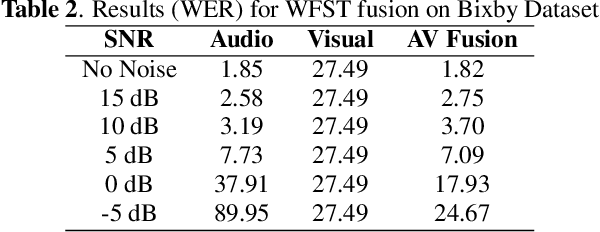
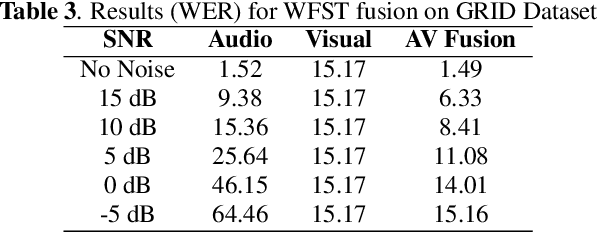
Abstract:Under noisy conditions, speech recognition systems suffer from high Word Error Rates (WER). In such cases, information from the visual modality comprising the speaker lip movements can help improve the performance. In this work, we propose novel methods to fuse information from audio and visual modalities at inference time. This enables us to train the acoustic and visual models independently. First, we train separate RNN-HMM based acoustic and visual models. A common WFST generated by taking a special union of the HMM components is used for decoding using a modified Viterbi algorithm. Second, we train separate seq2seq acoustic and visual models. The decoding step is performed simultaneously for both modalities using shallow fusion while maintaining a common hypothesis beam. We also present results for a novel seq2seq fusion without the weighing parameter. We present results at varying SNR and show that our methods give significant improvements over acoustic-only WER.
LipReading with 3D-2D-CNN BLSTM-HMM and word-CTC models
Jun 25, 2019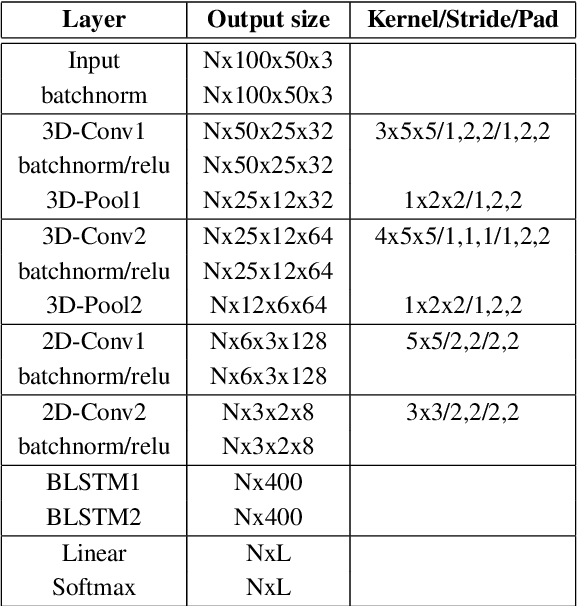


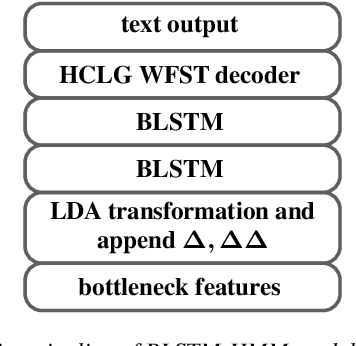
Abstract:In recent years, deep learning based machine lipreading has gained prominence. To this end, several architectures such as LipNet, LCANet and others have been proposed which perform extremely well compared to traditional lipreading DNN-HMM hybrid systems trained on DCT features. In this work, we propose a simpler architecture of 3D-2D-CNN-BLSTM network with a bottleneck layer. We also present analysis of two different approaches for lipreading on this architecture. In the first approach, 3D-2D-CNN-BLSTM network is trained with CTC loss on characters (ch-CTC). Then BLSTM-HMM model is trained on bottleneck lip features (extracted from 3D-2D-CNN-BLSTM ch-CTC network) in a traditional ASR training pipeline. In the second approach, same 3D-2D-CNN-BLSTM network is trained with CTC loss on word labels (w-CTC). The first approach shows that bottleneck features perform better compared to DCT features. Using the second approach on Grid corpus' seen speaker test set, we report $1.3\%$ WER - a $55\%$ improvement relative to LCANet. On unseen speaker test set we report $8.6\%$ WER which is $24.5\%$ improvement relative to LipNet. We also verify the method on a second dataset of $81$ speakers which we collected. Finally, we also discuss the effect of feature duplication on BLSTM-HMM model performance.
 Add to Chrome
Add to Chrome Add to Firefox
Add to Firefox Add to Edge
Add to Edge